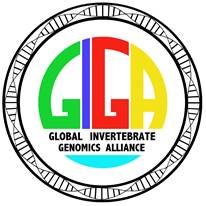New Organization Brings Together Top Researchers from Around the World to Sequence the Genomes of Invertebrates
 FORT LAUDERDALE-DAVIE, Fla.– December 13, 2013 –
FORT LAUDERDALE-DAVIE, Fla.– December 13, 2013 –
Pop Quiz: what creatures make up more than 70% of the approximately 1.9 million described species on earth and have long served as model organisms in many areas of biology? If you guessed invertebrates, you’re right!
Jose Lopez, Ph.D., a professor at NSU’s Oceanographic Center, organized this workshop of expert invertebrate scientists to discuss the plausibility of and long-term strategies for sequencing the whole genomes of multiple, targeted (non-insect, non-nematode) invertebrate organisms.
“There’s so much more we can learn from these animals if we come together to focus and coordinate our research efforts,” said Lopez. “GIGA allows us to work collaboratively, as we discover new and exciting details of invertebrate genomics.”
For years, these creatures have been a staple in research; they include sea urchins for developmental/cancer cell biology; the mollusks Aplysia and Loligo for neurobiology research; Drosophila fruit flies for genetics, and the nematode worm C. elegans for cell line maturation, development and genetics. (Studies using all of these have received Nobel Prizes.)
Invertebrates display many unique and outlandish traits among animals, such as:
- Some invertebrates are the longest-living animals on the planet, including Lamellibrachiatube worms (~250 years), Quahog clams Arctica islandica (maximum reported age 507 years), black corals (estimated 2,000 years) and the immortal Hydra;
- Tartigrades (“water bears”) can survive extreme temperatures (-150 ºC to 150 ºC), ionizing solar and galactic radiation, and even interplanetary vacuum;
- Octopuses not only have 8 arms, but also 3 hearts, and highly developed brains and visual systems; and,
- Sponges represent the most ancient lineage of animals and, together with corals, produce the largest number of chemical “lead” molecular structures for discovery of novel pharmaceuticals.
Given all that invertebrates can teach us about biodiversity, the question has arisen: are these unique features encoded within the DNA “genomes” (the complete hereditary material) of invertebrate organisms?
The overarching goal of GIGA is to provide a network of diverse scientists who will promote comparative genomics and bioinformatics research on non-insect/non-nematode invertebrates. GIGA was partially inspired by the Genome 10K project, initiated by NSU’s affiliate professor Stephen J. O’Brien, Ph.D., and colleagues to sequence genomes from 10,000 vertebrate animals.
Workshop participants came from the U.S., China, and Europe and included more than 40 experts in invertebrate biology, genomics and systematics from several universities and institutions, such as the Smithsonian and Scripps Oceanographic, and biotech industries (Life Technologies, PacBio and BioNanoGenomics) as well as NSU graduate and undergraduate students. In-depth discussions to develop the consortium’s framework were hashed out in breakout groups: which specific genomes to prioritize for sequencing, what DNA or RNA sequencing platforms are optimal, standards for collections and sample preparations, and where to specify a particular invertebrate taxon’s place on the evolutionary Tree of Life. Also discussed were nascent policies on data submittal, access and sharing within the GIGA consortium.
Dr. Lopez and colleagues summarized the mission of the consortium: “GIGA views our ongoing efforts as opportunities for those who have devoted their lives to the study of particular taxa to merge their deeper insights of the evolutionary history of their organisms into a modern genomics context.”
###
About Nova Southeastern University: Situated on 314 beautiful acres in Fort Lauderdale, Florida, Nova Southeastern University (NSU) is a dynamic, fully accredited research institution dedicated to providing high-quality educational programs at all levels. NSU is a not-for-profit independent institution with an enrollment of 27,000 students. NSU awards associate’s, bachelor’s, master’s, specialist, doctoral and first-professional degrees in a wide range of fields. NSU is classified as a research university with “high research activity” by the Carnegie Foundation for the Advancement of Teaching, and it is one of only 37 universities nationwide to also be awarded Carnegie’s Community Engagement Classification. For more information, please visit www.nova.edu
About NSU’s Oceanographic Center: The Oceanographic Center provides high-quality graduate education programs (i.e. masters, doctoral, certificate) in a broad range of marine science disciplines. Center researchers carry out innovative, basic and applied marine and research programs in coral reel biology, ecology, and geology; fish biology, ecology, and conservation; shark and billfish ecology; fisheries science; deep sea organismal biology and ecology; invertebrate and vertebrate genomics, genetics, molecular ecology, and evolution; microbiology; biodiversity; observation and modeling of large scale ocean circulation, coastal dynamics, and ocean atmosphere coupling; benthic habitat mapping; biodiversity; histology; and calcification. For more information,please visit http://www.nova.edu/ocean
Media Contact:
Joe Donzelli | Office of Public Affairs
954-262-2159 (office)
954-661-4571 (cell)
jdonzelli@nova.edu
 FORT LAUDERDALE-DAVIE, Fla.– December 13, 2013 –
FORT LAUDERDALE-DAVIE, Fla.– December 13, 2013 –